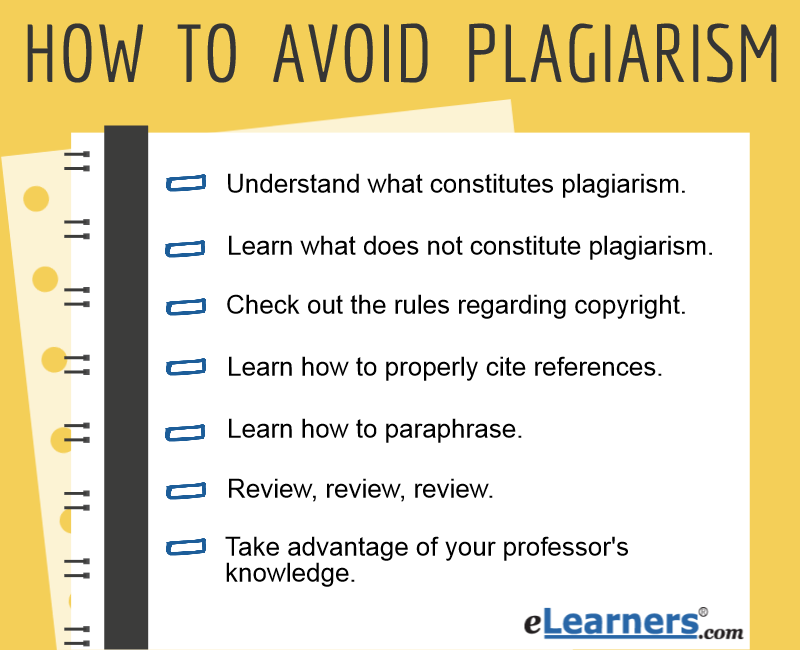 Plagiarism is stealing; it is the act of passing off another person's intellectual property as your own and taking credit for another person's work. Colleges and universities take academic dishonesty very seriously and are very hard on students who commit plagiarism. Some possible consequences include receiving a failing grade for an assignment, failing the entire course, and even expulsion from school.
Plagiarism is stealing; it is the act of passing off another person's intellectual property as your own and taking credit for another person's work. Colleges and universities take academic dishonesty very seriously and are very hard on students who commit plagiarism. Some possible consequences include receiving a failing grade for an assignment, failing the entire course, and even expulsion from school.
Copyright is the law put in place to prevent plagiarism. When someone copyrights something, it means they own the rights to copying that item. Many things are copyrighted — images, articles, books, poetry, and even ideas. But we all know laws are difficult to interpret without a degree from a law school, so how do you avoid copyright violations in college?
Understand what constitutes plagiarism.
Plagiarism is theft, plain and simple. When someone creates a digital image, a written work, or gives a speech, they own it. If you use those same words or images and call them your own, you are stealing it.
Learn what does not constitute plagiarism.
Plagiarism isn't using others people's work to support your ideas, plagiarism is not giving credit to the original artist. There are some things that are considered common knowledge, like the United States of America is on the North American continent, but if it's not as common as that, you should cite your sources.
Check out the rules regarding copyright.
Copyright laws protect artists and authors against plagiarism, but the copyright laws have just changed and higher education is still determining what the change means because digital media has created a significant impact on using other people's ideas.
Generally speaking, you need to know to:
- Give credit where credit is due
- Ask for permission if you use more than 10 percent of something
- Refer people to an item rather than copying it
You can follow the copyright discussions by doing a search on Google for "copyright."
Learn how to properly cite references.
There are many citation styles — APA, MLA, MLHA, Chicago Manual of Style, Turabien, etc. Check out which one your college or university, division or school, or your professor, wants you to use. Purchase the manual for it, and read it. The general idea behind all citation styles is giving your readers (your professor) the details they need to look up the source.
If you are writing a paper, collect your resources so you can cite them properly. If you borrowed a book or are writing your paper or doing your project over time, create a digital file of your resources. Make sure to know which information your citation style will ask for and if you use quotes, don't forget the page numbers.
Learn how to paraphrase.
Ideally your work should be original and you should use reference materials to support your ideas, so you should paraphrase as much as possible. Paraphrasing takes practice, but the basic method is read, think about it, and then restate it in your own words.
Check out TurnItIn.com or some other plagiarism resource.
These helpful Web sites allow you to submit your paper to be checked for plagiarism for you before you turn it in to your professor. Many colleges and universities provide accounts to plagiarism resources to their students, so check out your school's policy.
Review, review, review.
Once you have written your work or completed your project, set it aside and then review it to make sure you have cited everything. You should also take this time to glance over your work and check for typos. Common typos to check for are "loose" for "lose"; "it's" for "its"; "effect" for "affect"; and "you're" rather than "your."
Take advantage of your professor's knowledge.
If your professor offers to read your draft and provide comments, make sure to take advantage of that service. Your professor will note where citation is needed.
